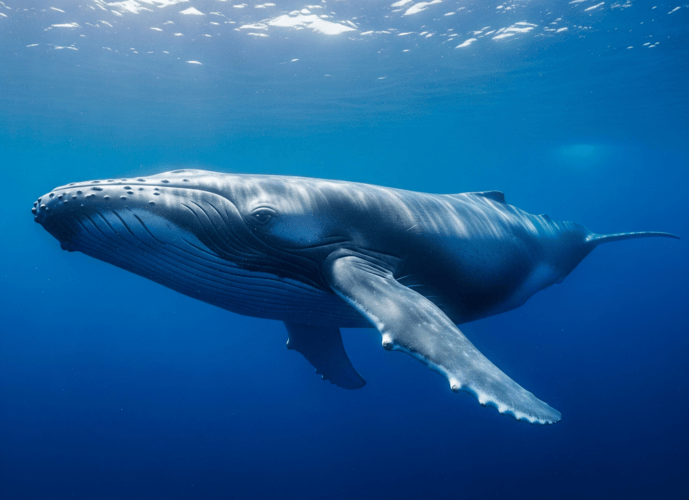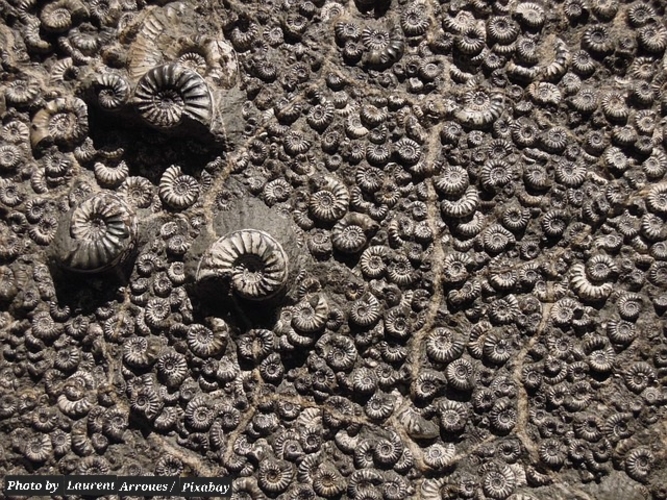Buried Testimony: Do Fossils Support Creation Or Evolution?
For over 150 years, evolutionists have promised the fossil record would provide the ultimate proof of Darwin’s theory. Yet after countless excavations and millions of specimens collected, the rocks tell a very different story than the one evolution textbooks claim. Rather than supporting gradual transformation over millions of years, the fossil record provides compelling evidence for special creation and the global flood described in Genesis.
THE GREAT MISSING LINK MYSTERY
When Charles Darwin published “On the Origin of Species” in 1859, he honestly acknowledged a major problem with his theory: “Why, if species have descended from other species by insensibly fine gradations, do we not everywhere see innumerable transitional forms?” He confidently predicted future fossil discoveries would fill these gaps.
That was 165 years ago. Despite intensive fossil hunting across every continent, the transitional forms remain conspicuously absent. The fossil record shows distinct kinds of organisms appearing suddenly in the rock layers, fully formed and functional, with no evolutionary precursors. This is exactly what we’d expect if God created distinct kinds of creatures, each designed to reproduce “after their kind” as Genesis describes.
Consider the famous Cambrian Explosion, where complex life forms with eyes, nervous systems, and sophisticated body plans appear suddenly in the fossil record. Trilobites, for instance, possessed compound eyes with optimal lens design—a feat of engineering that modern optics engineers struggle to replicate. Where are their simple, primitive ancestors? They simply don’t exist in the fossil record.
The same pattern repeats throughout: no transitional forms between fish and amphibians, reptiles and birds, or land mammals and whales. Even the supposed “missing links” in human evolution consist of a handful of fragmentary bones that are either fully ape or fully human when properly analysed.
THE TESTIMONY OF STASIS
Perhaps even more damaging to evolutionary theory is the phenomenon of stasis—organisms remaining essentially unchanged for vast periods of supposed evolutionary time. These “living fossils” present a serious problem for a theory that requires constant change and improvement.
The coelacanth, thought extinct for 70 million years until discovered alive in 1938, shows no significant change from its fossil ancestors. Horseshoe crabs, dragonflies, sharks, ginkgo trees, and countless other organisms remain virtually identical to their fossil counterparts allegedly separated by hundreds of millions of years. If evolution were true, these creatures should have evolved dramatically over such enormous time spans.
This stasis makes perfect sense from a creation perspective. God designed each kind of organism with the genetic information necessary to adapt to environmental changes while maintaining their essential characteristics. The fossil record preserves this stability, showing us the same kinds of creatures throughout Earth’s history.
CATASTROPHIC BURIAL: EVIDENCE FOR THE FLOOD
The very existence of fossils tells us about the conditions under which they formed. Fossilisation requires rapid burial under specific circumstances—exactly what the global flood would have provided. Animals don’t fossilize when they die naturally; they decay or are scavenged. Yet we find massive fossil graveyards containing millions of specimens buried together.
Consider the dramatic “death poses” captured in fossils: fish frozen mid-swim, dinosaurs with necks arched backward in apparent agony, entire herds of animals buried together. These aren’t the result of gradual processes over millions of years—they’re snapshots of catastrophic burial.
Polystrate fossils—tree trunks and other specimens extending through multiple rock layers—provide additional evidence. If these layers were deposited slowly over millions of years, the trees would have rotted away long before being fossilized. Instead, they were buried rapidly during a massive flood event.
The global flood also explains the general ordering of fossils. Marine creatures are found in the lowest layers because they lived in the pre-flood ocean. Land animals are found higher up, sorted roughly by their ability to flee rising floodwaters. This pattern makes more sense than the evolutionary explanation of “simpler” creatures evolving into “more complex” ones over time.
THE CAMBRIAN EXPLOSION: DARWIN’S DILEMMA
The Cambrian Explosion represents perhaps the greatest challenge to evolutionary theory. In rocks supposedly 540 million years old, we find an incredible diversity of complex life forms appearing suddenly without any evolutionary precursors. This event is so problematic for evolution that palaeontologists have struggled to explain it for over a century.
The creatures found In Cambrian rocks aren’t simple or primitive—they’re sophisticated organisms with complex body plans, nervous systems, and sensory organs. The trilobite eye, for instance, is constructed with calcite lenses arranged in an optimal configuration that follows advanced optical principles. These aren’t the products of gradual evolution—they’re evidence of intelligent design.
From a creation perspective, the Cambrian Explosion makes perfect sense. It represents God’s creative activity during the initial days of creation week, when He filled the seas with living creatures. The sudden appearance of complex, fully functional organisms is exactly what we would expect from an all-powerful Creator.
DATING PROBLEMS AND CIRCULAR REASONING
The evolutionary timeline itself rests on questionable assumptions. Radiometric dating methods assume constant decay rates and known initial conditions—assumptions that cannot be verified for events in the distant past. When different dating methods are applied to the same rock, they often give wildly different results.
More problematically, the dating of fossils often involves circular reasoning. Rocks are dated by the fossils they contain, while fossils are dated by the rocks in which they’re found. This logical fallacy undermines the entire evolutionary timescale.
Recent discoveries of soft tissue, blood vessels, and even DNA in supposedly ancient fossils raise serious questions about their claimed ages. These biological materials cannot survive for millions of years, yet they’re being found in dinosaur bones and other “ancient” specimens. This evidence points to a much younger Earth than evolutionary theory requires.
DO FOSSILS SUPPORT CREATION OR EVOLUTION? THE BIGGER PICTURE
The fossil record provides a window into Earth’s history, and that window reveals a story of creation, not evolution. We see distinct kinds of organisms appearing suddenly, remaining stable throughout their existence, and being buried catastrophically during a global flood. This pattern matches perfectly with the biblical account of creation and the flood.
The evidence is clear for those willing to examine it objectively. The fossils don’t support gradual evolution over millions of years—they support special creation and catastrophic burial during Noah’s flood. The rocks cry out in testimony to their Creator, just as Scripture declares: “The heavens declare the glory of God; the skies proclaim the work of his hands.”
Rather than undermining faith, the fossil record strengthens it. The next time someone claims fossils prove evolution, remember what the rocks really tell us. They speak of sudden appearance, not gradual change. They reveal stasis, not transformation. They show evidence of catastrophic burial, not slow accumulation. Most importantly, they point to a Creator who deserves our worship and trust.
DO FOSSILS SUPPORT CREATION OR EVOLUTION? RELATED FAQs
What do creationist palaeontologists say about supposed evolutionary sequences like the horse series? Creationist scientists like Dr Duane Gish and Dr Kurt Wise have demonstrated the famous “horse evolution” sequence is actually a collection of different created kinds arranged in evolutionary order by assumption, not evidence. The creatures in this sequence show distinct gaps between them and represent separate baramin (created kinds) that lived in different ecological zones. Many of these “evolutionary ancestors” actually lived at the same time, making the proposed evolutionary sequence impossible.
- How do creationists explain the geographical distribution of fossils, like why certain dinosaurs are only found in specific regions? Creation scientists propose pre-flood biogeography created distinct ecological zones where different creature types lived before the flood. Dr Kurt Wise suggests continental drift occurred rapidly during the flood year, separating these populations and creating the fossil distribution patterns we see today. This explains why certain dinosaur types are geographically restricted without requiring millions of years of evolution.
- What about the fossil record of plants—doesn’t it show clear evolutionary progression? Botanist Dr Joachim Scheven has shown plant fossils actually demonstrate the same pattern as animals: sudden appearance of complex forms without transitional ancestors. Flowering plants (angiosperms) appear suddenly in the Cretaceous layers with no evolutionary precursors, a phenomenon even evolutionists call “an abominable mystery.” The fossil record shows distinct plant kinds appearing fully formed, consistent with Genesis creation.
How do we explain the apparent progression from simple to complex organisms in rock layers? Dr John Morris and other ICR scientists explain this pattern through the ecological zonation model of flood geology. Marine invertebrates lived in the deepest ocean zones and were buried first, while land animals capable of fleeing to higher ground were buried later in the flood sequence. This creates an apparent “progression” that actually reflects pre-flood ecology and the creatures’ ability to escape rising floodwaters, not evolutionary development.
- What about homologous structures—don’t similar bone patterns in different animals prove common descent? Biologist Dr Jerry Bergman argues homologous structures actually point to a common Designer using optimal engineering solutions for similar functions. The pentadactyl limb (five-digit pattern) appears in bats, whales, and human beings because it’s an efficient structural design, not because these creatures evolved from a common ancestor. Similar structures reflect intelligent design principles, not evolutionary relationships.
- How do we address the molecular clock arguments used to date evolutionary events? Dr Nathaniel Jeanson and other creationist geneticists have shown molecular clocks rely on assumptions about mutation rates and generation times that cannot be verified for the distant past. When these assumptions are adjusted to fit known historical events, the molecular data actually supports a young earth timeline. Additionally, the lack of genetic diversity in many species suggests recent creation, not millions of years of evolutionary change.
What about trace fossils like footprints and burrows that seem to show behavioural evolution? Creation palaeontologist Dr Leonard Brand has extensively studied trace fossils. He found they demonstrate the same complex behaviours we see in modern animals, with no evidence of evolutionary development. Dinosaur trackways show sophisticated herding behaviours, and ancient burrows are as complex as those made by modern creatures. These trace fossils reveal animals have always possessed the behavioural complexity their Creator designed into them from the beginning.
DO FOSSILS SUPPORT CREATION OR EVOLUTION? OUR RELATED POSTS
Editor’s Pick

Testament to Design: The Engineering Marvel of Elephants
Picture an African elephant delicately plucking a single acacia leaf with the tip of its trunk, then moments later using [...]

Blue Whales: Mammoth Icons of Intelligent Design
Imagine an animal so massive its heart alone weighs as much as a small car, yet so precisely engineered it [...]

Do Unbelieving Kids Disqualify Church Leaders?
REFORMED PERSPECTIVES ON 1 TIMOTHY 3 AND ELDER QUALIFICATIONS Every pastor knows the heartbreak. A faithful elder who has served [...]

Why Did God Kill Onan? Wasn’t the Punishment Disproportionate?
The story of Onan in Genesis 38 troubles many. Why would God strike down a man for what seems like [...]

Is God Preparing Me for Ministry? How May I Know for Sure?
The question haunts many faithful believers. You’re serving faithfully in your local church, perhaps teaching Sunday school or leading a [...]

Ephesians 1:13: Was the Spirit’s Indwelling Promised of Old?
When Paul declares believers are “sealed with the promised Holy Spirit” in Ephesians 1:13, one word jumps off the page: [...]

Monergism vs Synergism: Is Salvation God’s Work Alone?
When God saves us, does He do it alone, or does He need our help? The question isn’t mere theological [...]

Was Jesus Abandoned by the Father on the Cross?
WHY WE ANSWER IN THE NEGATIVE “My God, my God, why have you forsaken me?” These words from the cross [...]

Why Do Some Respond to God’s Call While Others Don’t?
THE REFORMED VIEW ON OUTWARD AND INWARD CALLS EXPLAINED Picture this: Two neighbours attend the same church service. They hear [...]

Does Ocean Salt Content Prove a Young Earth?
A COMPELLING LOOK AT MARINE CHEMISTRY AND EARTH’S TIMELINE The Salt Question That Challenges Deep Time: If Earth’s oceans have [...]





